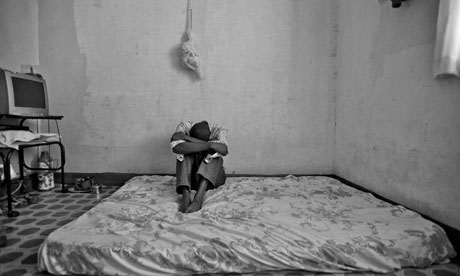Originally published in the Journal Inquirer as “How can we stop rape?” Tuesday, Dec. 3, 2013
by Kristen J. Tsetsi
The University of Michigan reports that according to studies conducted in 2000 and 2001, teaching men to be dominant and aggressive often leads to their development of hyper-masculinity, male peer support for sexual aggression, and adversarial sexual beliefs.
 Earlier studies conducted from 1974 to 1997, the university reports, show additional factors contributing to sexual violence include sex-role socialization, rape myths, lack of sanction for abuse, male peer support groups, and all-male membership groups such as fraternities and sports teams.
Earlier studies conducted from 1974 to 1997, the university reports, show additional factors contributing to sexual violence include sex-role socialization, rape myths, lack of sanction for abuse, male peer support groups, and all-male membership groups such as fraternities and sports teams.
“In my opinion, (sexual assault) is a side effect of a chauvinist culture,” says Dr. Jamshid Marvasti, a psychiatrist at Manchester Hospital in Manchester, Conn., who specializes in sexual abuse and trauma and who also counsels sex offenders and victims at West Hartford’s New England Clinical Associate. “We need to have feminists more involved, boys from childhood need to be educated, and I think this community of mind that ‘I can do whatever I want whenever I want to’ needs to be decreased.”
In the meantime, just as there are common-sense behaviors people should adopt if they don’t want to be robbed (lock doors, close shades at night, use exterior lighting) or mugged (stay out of alleys, walk with friends at night), there are common-sense behaviors that may reduce the risk of sexual assault.
They include not drinking too much alcohol at social events where the likelihood of a sexual assault is known to be high, walking with a buddy if out at night, taking a self-defense class, and carrying pepper spray or a stun gun.
Marvasti says there should also be more training focused on teaching people to know who they’re involved with.
“Many things happen because of alcohol and drugs, and there are protections everyone needs to learn and to have,” he says. “You cannot, when you’ve met a man for the first time in a bar, go to his home to have coffee.”
He adds that people should also trust their instincts and not ignore signs that someone may be a predator. Many victims will say when they review the series of events leading to their assault that they might have been able to avoid the incident if they’d paid attention to the behaviors that made them nervous, or that had them questioning whether they should spend time with the person who ended up being their attacker, Marvasti says.
Most protective measures, however, are not a reliable defense against being raped, says Jillian Gilchrest, Connecticut Sexual Assault Crisis Services (CONNSACS) director of public policy and communication.
“We do talk about risk reduction, like watching your drinking, using the buddy system, or learning self-defense, but what’s interesting is that those strategies always focus on how women can ward off sexual assault instead of focusing on the rapist,” she says.
No matter how many risk reduction tactics a person uses, she explains, an assault can easily happen in a place and with a person against whom none of the measures would have been taken. After all, eight out of 10 victims know their attackers, who can be short-term acquaintances, roommates, or even the significant other of a friend.
Women are taught, for example, to cover their drinks at the bar when they step away to prevent someone from drugging them. But that technique is useless against someone the victim knows and who ultimately uses familiarity to gain access to her (or him) and attack when the victim is vulnerable.
Gilchrest cites as an example a female UConn student, Rosemary Richi, who alleged that in 2011 she was raped by a football player who invited her to join him in his room while he did laundry. She drank three shots of alcohol, and then, she claimed, he raped her.
Another UConn student, Kylie Angell, said she was raped by a classmate in her dorm in 2010.
Approximately two-thirds of rapes are committed by someone the victim knows, reports the Rape, Abuse, & Incest National Network (RAINN). Thirty-eight percent of rapists are acquaintances, 28 percent are intimate, and more than 50 percent of rapes were reported to have taken place within a mile of, or in, the victim’s home.
There’s therefore more to the prevention of sexual assault, Gilchrest says, than telling potential victims how to protect themselves.
Connecticut’s Sexual Violence Prevention Plan, distributed by the state Department of Public Health, emphasizes prevention initiatives that develop within the greater public — and among young people in particular — pro-social attitudes and behavior, belief in gender equality, and the formation and maintenance of “healthy personal and social relationships.”
CONNSACS, Gilchrest says, is also concerned with preventing violence and addresses the behavior of the offenders more than it addresses what the victims could have done to avoid being raped.
“If you’ve been taught your whole life that you should protect yourself from getting raped, and you get raped, you might think that you’ve messed up,” she says. “We focus on the culture and attitudes and norms that allow sexual violence to exist — so, reaching out to men.”
CONNSACS partnered with the national movement Men Can Stop Rape (mencanstoprape.org) to form the Where Do You Stand? Connecticut campaign, which invites men to get involved in the prevention of sexual violence.
The Men Can Stop Rape website reports that research by psychologist Alan Berkowitz shows a majority of college-aged men don’t like seeing women belittled or mistreated, but that they stay silent if they witness such behavior because they believe they’re alone in their feelings. Training in bystander intervention, the website explains, “better equips men to express their discomfort.”
Men Can Stop Rape also helps members recognize unhealthy aspects of masculinity and tries to replace violent attitudes and behaviors with behaviors that respect the self and others.
Gilchrest says that while risk reduction — for example, using a buddy system or holding keys — is important, everyone has a role in preventing sexual assault.
“Women will be safer when the entire community can identify roles they can take, including addressing situations that could lead to sexual violence, stepping in during an incident, and speaking out against ideas and behaviors that support sexual violence,” she says.
~ ~ ~
 Note: About 1 in 33 men have experienced an attempted or completed rape in their lifetime. 2.78 million men in the U.S. have been victims of sexual assault or rape. (RAINN)
Note: About 1 in 33 men have experienced an attempted or completed rape in their lifetime. 2.78 million men in the U.S. have been victims of sexual assault or rape. (RAINN)
~ ~ ~
Photos are linked to the sources from which they were pulled for this entry and are not meant to promote or endorse the websites or their associated content.

Kristen Tsetsi is the author of the post-Roe v. Wade novel The Age of the Child, called “scathing social commentary” and “a novel for right now.” She is also the author of the novels The Year of Dan Palace and Pretty Much True (studied in Dr. Owen W. Gilman, Jr.’s The Hell of War Comes Home: Imaginative Texts from the Conflicts in Afghanistan and Iraq). Kristen’s interview series at JaneFriedman.com offers behind-the-scenes insights into all things writing and publishing.



